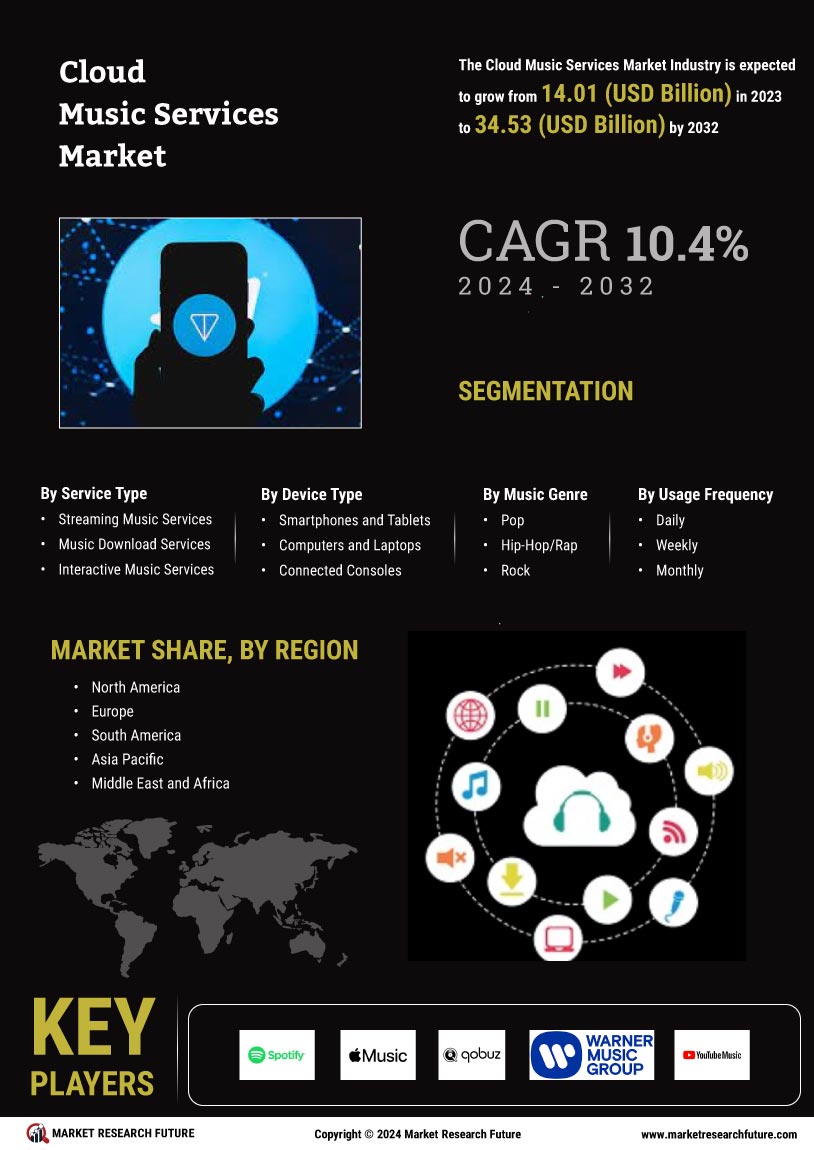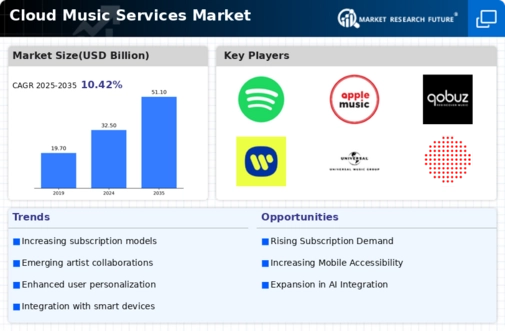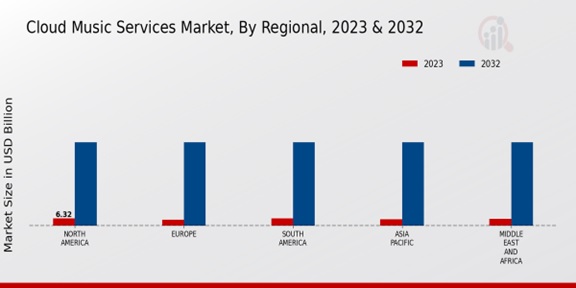Market Growth Projections
The Global Cloud Music Services Market Industry is projected to experience robust growth, with an estimated market value of 32.5 USD Billion in 2024, escalating to 51.1 USD Billion by 2035. This growth trajectory indicates a compound annual growth rate (CAGR) of 4.19% from 2025 to 2035. Such projections reflect the increasing consumer adoption of cloud-based music services, driven by technological advancements and changing listening habits. The market's expansion is likely to be influenced by factors such as enhanced internet accessibility, the proliferation of mobile devices, and the diversification of service offerings.
Rising Demand for Streaming Services
The Global Cloud Music Services Market Industry experiences a notable surge in demand for streaming services, driven by the increasing preference for on-demand music access. As of 2024, the market is valued at approximately 32.5 USD Billion, reflecting a shift in consumer behavior towards digital platforms. This trend is further supported by the proliferation of smartphones and internet connectivity, enabling users to access music anytime and anywhere. The convenience and variety offered by streaming services attract a diverse audience, from casual listeners to dedicated music enthusiasts, thereby expanding the market's reach and potential.
Diverse Revenue Models and Subscription Plans
Diverse revenue models and subscription plans are crucial drivers of the Global Cloud Music Services Market Industry. Companies are increasingly adopting flexible pricing strategies, including freemium models, ad-supported tiers, and premium subscriptions, to attract a wider audience. This variety allows consumers to choose plans that best fit their listening habits and budget, thereby enhancing user engagement and retention. Additionally, partnerships with artists and exclusive content offerings further incentivize subscriptions. As the market evolves, these adaptive strategies are likely to sustain growth and foster competition among service providers.
Increased Internet Penetration and Mobile Usage
The Global Cloud Music Services Market Industry benefits significantly from increased internet penetration and mobile device usage worldwide. As more individuals gain access to high-speed internet, particularly in emerging markets, the potential customer base for cloud music services expands. The rise of mobile applications facilitates easy access to music streaming, allowing users to enjoy their favorite tracks on the go. This trend is particularly pronounced among younger demographics, who prioritize mobile accessibility. The combination of these factors suggests a robust growth trajectory for the market, with a projected CAGR of 4.19% from 2025 to 2035.
Technological Advancements in Cloud Infrastructure
Technological advancements in cloud infrastructure play a pivotal role in shaping the Global Cloud Music Services Market Industry. Innovations in data storage, processing capabilities, and streaming technologies enhance the user experience by providing high-quality audio and seamless access to vast music libraries. These advancements not only improve service reliability but also reduce operational costs for service providers. As a result, companies can offer competitive pricing and diverse subscription models, catering to different consumer preferences. This technological evolution is likely to contribute to the projected market growth, with an estimated value of 51.1 USD Billion by 2035.
Emerging Markets and Global Expansion Opportunities
Emerging markets present substantial growth opportunities for the Global Cloud Music Services Market Industry. Regions such as Asia-Pacific and Latin America are witnessing a rapid increase in disposable income and smartphone penetration, leading to a burgeoning demand for cloud music services. Companies are strategically targeting these markets to capitalize on the untapped potential. Localized content and tailored marketing strategies are essential for success in these diverse regions. As the industry continues to expand globally, the focus on emerging markets is expected to drive significant revenue growth in the coming years.






















Leave a Comment